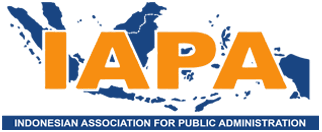Measuring the Financial Performance of Village Owned Enterprises (VOEs)
DOI:
https://doi.org/10.21776/ub.jpas.2019.004.01.3Keywords:
Financial performance, Village Owned Enterprises, measurementAbstract
In order to accommodate village potentials and fulfillment of villagers’ needs, through Law No. 32 of 2004 concerning Local Government, the government provides great support so that the village has a business entity which is able to develop and drive the local economy. Law No. 32 0f 2004 states that the village can establish a village-owned enterprises (VOEs), village businesses formed / established by the village government whose capital ownership and management are carried out by the village government and the community, in accordance with the needs and potential of the village. In its development, VOEs were encouraged as economic institutions at the village level supported by the government in order to handle economic activities at the village level because their shares were dominated by the village government. In the framework of this achievement, the financial performance assessment is needed to give feedback for VOEs manager in making the right decision for VOEs development. This study aims to search a proper measurement that appropriate to measure the financial performance of Village Owned Enterprises (VOEs). The result of the study found that several financial ratios can be utilized to measure the financial performance of Village Owned Enterprises (VOEs). Those financial ratios can be classified into capital, asset, management, earning and liquidity assessment, which is known as CAMEL model:1) Ratio of Asset Development is used to measure the Capital Adequacy; 2) Ratio of Productive Asset Quality is used to measure the Asset Quality; 3)BoPo Ratio (Operational Cost of Operating Income) is used to measure the Management Efficiency; 4) Ratio on Asset (ROA) is used to measure the Earnings Quality; and 5)Loan to Deposit Ratio to measure the Liquidity.
References
Fahmi, I. (2012). Analisis Kinerja Keuangan. Bandung: Alfabeta.
Kamaroesid, H. (2016). Tata Cara Pendirian dan Pengelolaan Badan Usaha Milik Desaâ€. Jakarta: Mitra Wacana Media.
Kasmir. (2012). Analisis Laporan Keuangan. Jakarta: PT. Raja Grafindo Persada.
Khan, M. Y. and Jain, P. K. (2006). Management Accounting: Text, Problems and cases. New Delhi: Tata McGraw-Hill Publishing Company Limited.
Yabbar, R & Hamzah, A. (2016). Tata Kelola Pemerintahan Desa: Dari Peraturan Desa Hingga Pengelolaan Badan Usaha Milik Desa. Dari Perencanaan Pembangunan Desa Hingga Pengelolaan Keuangan Desa. Surabaya: Pustaka.
Afrijal, R. (2016). Analisis Perbandingan Kinerja Keuangan Badan Usaha Milik Desa (Bumdes) di Kabupaten Rokan Hulu. Jurnal Ilmiah Cano Ekonomos, 5(1).
Aktan, B. & Bulut, C. (2008). Financial Performance Impacts of Corporate Entrepreneurship in Emerging Markets: A Case of Turkey. European Journal of Economics, Finance and Administrative Sciences, 12.
Karri, H.K., Meghani, K., & Mishra, B.M. (2015). A Comparative Study on Financial Performance of Public Sector Banks in India: an Analysis on Camel Model. MPRA (Munich Personal RePEc Archive) Paper No. 62844, posted 17 March 2015.
Kaur, J., Kaur, M. & Singh, S. (2015). Financial Performance Analysis of Selected Public Sector Banks: A CAMEL Model Approach. IJABER, 13(6).
Misra, S. K. & Aspal, P. K. (2013). A Camel Model Analysis of State Bank Group. World Journal of Social Sciences, 3(4), 36 – 55.
Wang, D.H. & Huynh, Q.L. (2013). Complicated Relationships among Audit Committee Independence, Nonfinancial and Financial Performance. Journal of Knowledge Management, Economics, and Information Technology, 3(5).
Alhabsyi, R. (2015). Analisis keuangan (studi kasus di industri pengolahan cokelat BUMDes Mototompiaan desa poyuyanan kecamatan passi barat kabupaten Bolaang Mongondow). Thesis Universitas Sam Ratulangi Fakultas Pertanian: Manado.
Hajar, S. (2016). Analisis Kinerja Keuangan pada Unit Pengelola Kegiatan Kecamatan Rambah Samo. Thesis Program Studi Akuntansi Fakultas Ekonomi Universitas Pasir Pengaraian: Rokan Hulu.
Hartini, M, and Asrori. (2015). Analisis Kesehatan Kinerja Keuangan pada Bumdes Sumber Makmur. Thesis Fakultas Ekonomi, Universitas Pasir Pengaraian. Kabupaten Rokan Hulu, Riau.
Sari, V. & Widha, A. (2016). Analisis Rasio Keuangan Sebagai Alat untuk Menilai Kinerja Koperasi Berdasarkan Peraturan Menteri Negara Koperasi dan Usaha Kecil dan Menengah Republik Indonesia Nomor: 06/PER/M.KUKM/V/2006: Studi Kasus di KPRI Subur Kecamatan Pasarkliwon Surakarta Periode 2011-2015). Skripsi Jurusan Akuntansi Fakultas Ekonomi Universitas Sanata Dharma: Yogyakarta.
Law No. 32 of 2004 concerning Local Government.
Law Number 6 of 2014 concerning Villages .
Regulation of the Minister of Internal Affairs Number 39 of 2010 concerning Village-Owned Enterprises.
Regulation of Minister of Village, Underdeveloped Regional Development and Transmigration No. 2 of 2015 Concerning Code of Conduct and Village Decision Making Mechanism.
Regulation of Minister of Village, Underdeveloped Regional Development and Transmigration No. 4 of 2015 concerning the Establishment, Development and Management, and Dissolution of Village Owned Enterprises.
Downloads
Published
Issue
Section
License
Copyright Statement
Authors who publish with JPAS agree to the following terms:
(1). Authors retain copyright and grant the journal right of first publication with the work simultaneously licensed under a Creative Commons Attribution License that allows others to share the work with an acknowledgement of the work's authorship and initial publication in this journal.
(2). Authors are able to enter into separate, additional contractual arrangements for the non-exclusive distribution of the journal's published version of the work (e.g., post it to an institutional repository or publish it in a book), with an acknowledgement of its initial publication in this journal.
(3). Authors are permitted and encouraged to post their work online (e.g., in institutional repositories or on their website) prior to and during the submission process, as it can lead to productive exchanges, as well as earlier and greater citation of published work (See The Effect of Open Access).
Permissions and reuse
For authors
Authors may use their own articles for the following non-commercial purposes without asking our permission (and subject only to acknowledging first publication in JPAS and giving a full reference or web link, as appropriate).
(1). Posting a pdf of their own article on their own personal or institutional website, for which no charge for access is made.
(2). Making a reasonable number of copies for personal or non commercial professional use.
This includes the contributors own teaching purposes.
(1). Republishing part or all of the article in a book or other publication edited by the author (except for multiple contributions in the same book or publication, for which permission needs to be sought.
(2). Using individual figures or tables or extracts of text (up to 300 words) in other publications published by a third party.
(3). Using the article in a course pack or compilation (whether paper or electronic) in the authors institution. This does not apply if a commercial charge is made for the compilation or training programme.
For third parties
All articles published by JPAS are published by default as open access.















